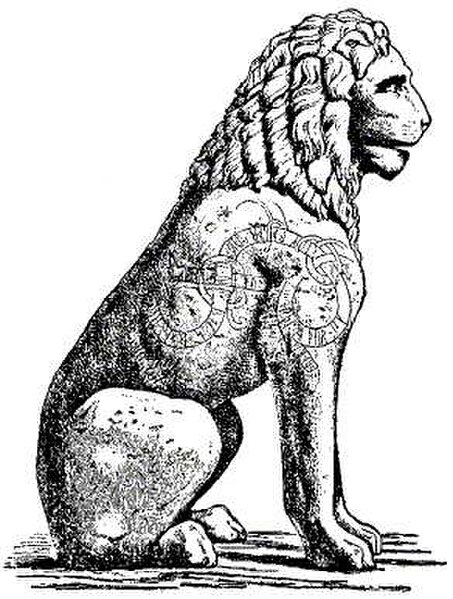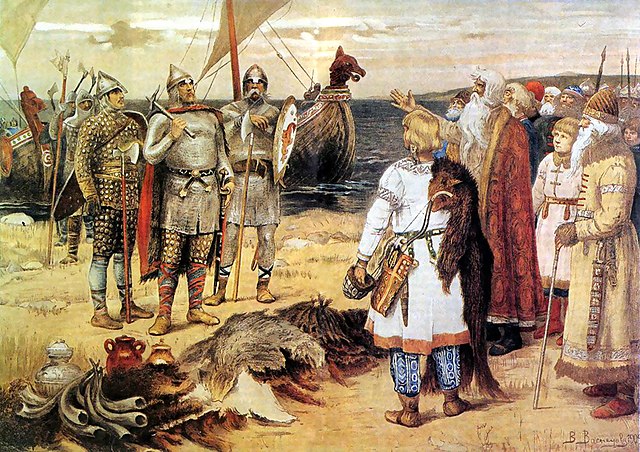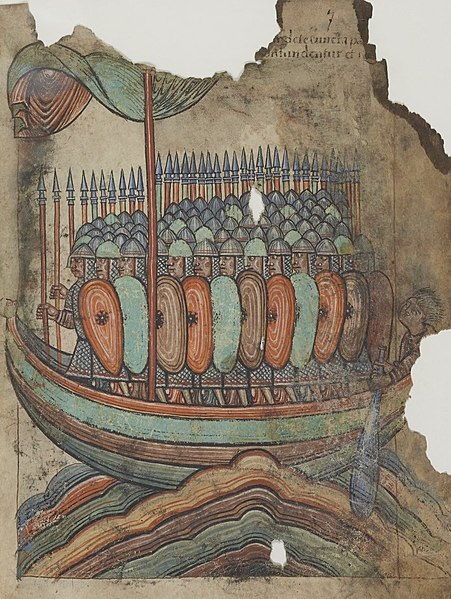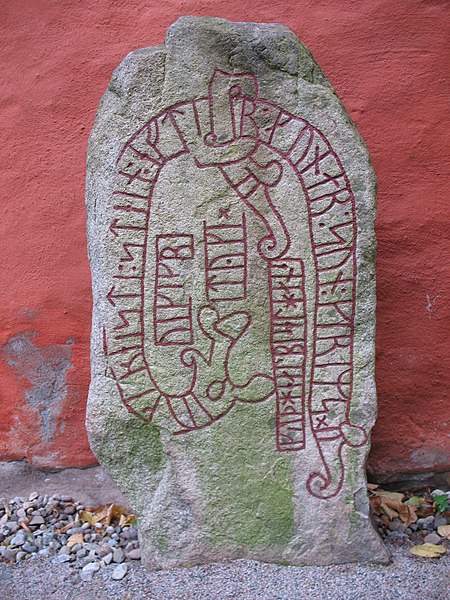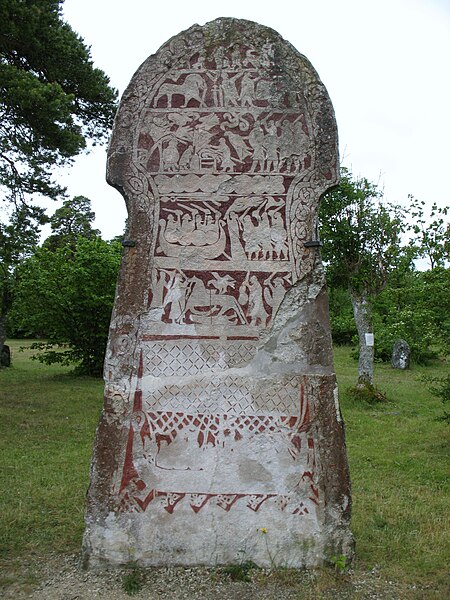The Varangians were Viking conquerors, traders and settlers, mostly from present-day Sweden. The Varangians settled in the territories of present-day Belarus, Russia and Ukraine from the 8th and 9th centuries, and established the state of Kievan Rus' as well as the principalities of Polotsk and Turov. They also formed the Byzantine Varangian Guard, which later also included Anglo-Saxons.
One of the runic inscriptions in Hagia Sophia, probably carved by members of the Varangian Guard
Piraeus Lion drawing of curved lindworm. The runes on the lion tell of Swedish warriors, most likely Varangians, mercenaries in the service of the Byzantine (Eastern Roman) Emperor.
Nicholas Roerich: Guests from Overseas (1899)
Viktor Vasnetsov, The Invitation of the Varangians: Rurik and his brothers arrive in Staraya Ladoga.
Vikings were seafaring people originally from Scandinavia, who from the late 8th to the late 11th centuries raided, pirated, traded, and settled throughout parts of Europe. They also voyaged as far as the Mediterranean, North Africa, the Middle East, Greenland, and Vinland. In their countries of origin, and some of the countries they raided and settled in, this period is popularly known as the Viking Age, and the term "Viking" also commonly includes the inhabitants of the Scandinavian homelands as a whole. The Vikings had a profound impact on the early medieval history of Scandinavia, the British Isles, France, Estonia, and Kievan Rus'.
Depiction of Vikings sailing a longship from c. 1100
A Viking Age depiction from the Tjängvide image stone, on Gotland.
Runestone raised in memory of Gunnarr by Tóki the Viking.
The Stora Hammars I image stone, showing the saga of Hildr, under what may be the rite of blood eagle, and on the bottom a Viking ship


